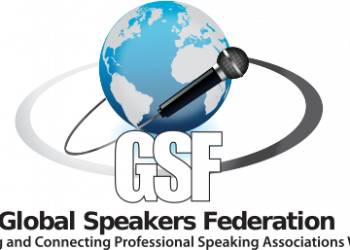Big is not always better. SMEs can make a difference in tapping the strengths that work to their advantage.
Does size in terms of business and organisational structure matter when growing your business? I believe that the answer from your customers depends on what you and your brand have to offer and how these measure up against the big players of your industry.
Small- and medium-sized enterprises (SMEs) may not have the funding and brand exposure of multinational companies (MNCs), but many have a track record of delivering good products and services, particularly through its people.
What sells? Do people buy based on their needs, wants, and emotions? Chances are most people buy from people they like. Purchases were often based on emotions first where customers find relevancy and connection, before evaluating their needs, practicality, and affordability.
Here are three essential areas that SMEs need to focus on in order to build a strong industrial presence:
- Your Brand
Professor Philip Kotler indicated that people’s buying habits can be disrupted due to negative feedback and how the feedback is perceived. This bring us to first impressions. Do first impressions count? In today’s fast-moving world of social media, information is transferred at lightning speed. Most people have neither the time nor patience to authenticate what they read or hear. They simply take the information, make assumptions based on their personal views, and share it with others. Such message transfer is great for you and your brand when feedback is positive, but can be damaging when negative feedback and fallacies are proliferated.
The old saying of “it’s not what you know, it’s who you know” does not really work anymore. These days, it is “who knows you” and what you and your brand truly represent.
The advantage of being an SME is the personal and close customer connections compared to the hierarchical multi-layered management processes of MNCs. The latter is often managed through mechanical or digitally-controlled systems with minimal human interactions i.e. a service hotline or touch-tone menu as opposed to speaking with an operator.
People and organisations will remember an ill-reputed brand, service, person, or product they experienced. Hence the importance to build strong brand reputation through the following key foci:
• What does your brand stand for (history and background)?
• What has it done for the industry and customers (references)?
• What kind of noise does your brand make (market awareness); and how frequent (information and feedback support) and through which platform (accessibility) does it do this? and
• What are your company’s core values (concerning people)?
2. Your Customers
• Know your customers. Never hardsell something the customers do not need or want, even if you have a world-class product or service. Don’t just push what you have. The only time it matters to the customer is when your product or service is aligned to what the customer is looking for. Customer awareness requires intentional and intensive questioning and listening skills. Only when you know what your customer needs, are you able to provide possible solutions, even if it means having to customise or personalise it. This is one of the first values an SME is able to easily adapt compared to an MNC.
• Involve your customers. Every customer wants to be heard. Involve them at every possible opportunity when recommending or developing a product or service. Customers will see the value and advantage of working with you and your company (even if you are not an MNC) when they feel that their contributions are valued, integrated, and implemented. It is the mutual understanding and combined efforts in solution provision and the personal touch that matters.
• Make it Meaningful for customers. What you do for your customers’ business growth and value is key. If you do not care for them and their business, why should they patronise your business? There are many other alternatives, not to mention the bigger brands. Always consider your customer’s intended outcome from the purchase. I once managed a family-owned company which was acquired by an international conglomerate. Their personal and customised solutions were undermined by a protracted process of approvals before customers finally got what they wanted. This in turn hindered their potential growth and made it difficult to support their customers.
3. Your People
Having a leaner staff strength means that SMEs can more easily align and mobilise their staff at every level from receptionist to chief executive officer (CEO) to represent, speak, and behave as one. The decision-making process can be streamlined and expedited when necessary, to meet customers’ delivery needs. Having said that, to get everyone aligned requires transparency and extensive people development. As Mr Herb Kellerher once said: “Your people come first, and if you treat them right, they will treat your customers right.”
SMEs have the advantage of engaging and empowering their people much faster and with wider coverage. Companies can grow its people’s effectiveness and performance through learning and development programmes such as the SPOT (Social and Emotional Intelligence, People, Outcome, Trust) Interpersonal Skills Model:
• Social and Emotional Intelligence. To be socially and emotionally aware when working with all stakeholders; to know how to adapt under any circumstance; and to always stay conscious on how to appear as one i.e. people and company,
• People. Developing people to be truly interested in people, to live a life that inspires and influence,
• Outcome. Understanding what ultimate outcome your people and customers are pursuing, and
• Trust. Engaging and empowering employees through transparency, transferability of knowledge, and transition of control and power.
First published on Today’s Manager Magazine / Copyright © 2018 Singapore Institute of Management


